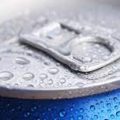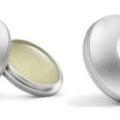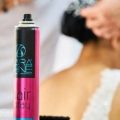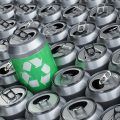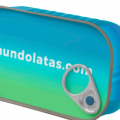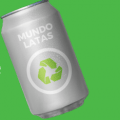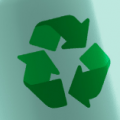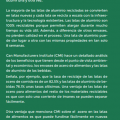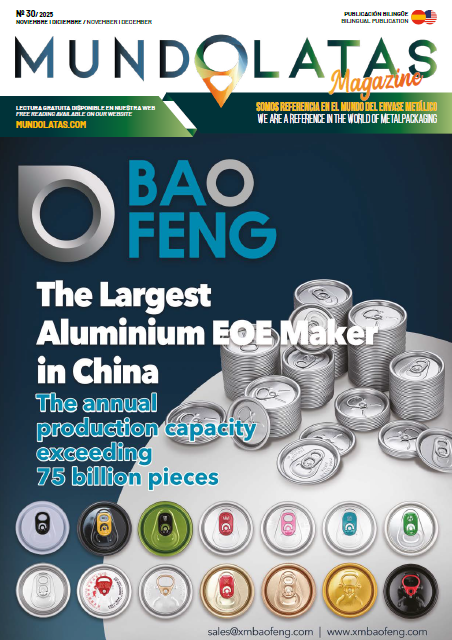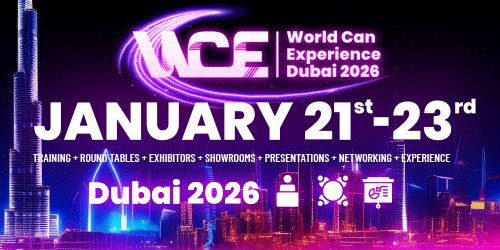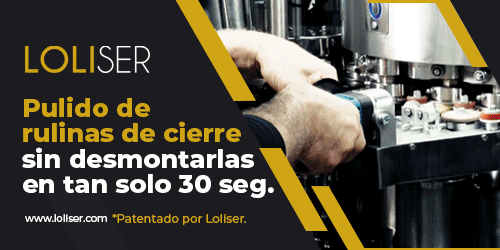Getting packaging to become recyclable material through a circular process is no easy task. The Spanish newspaper, El País, recently carried out a very complete work (El viaje no tan circular de los residuos domésticos en España) in which it analyzes the degree of circularity of some household packaging. To do so, it reflects each of the phases of the process: Design and Manufacture, Waste Collection, Recycling and Raw Material. In Mundolatas, we are going to bring you part of this analysis, starting, logically, with aluminium cans.
Aluminium can
This type of packaging should go directly into the yellow containers. Aluminum cans, thanks to its design and material, is a 100% recyclable packaging and, unlike other packaging, does not lose quality in the process. In other words, one aluminium can can give way to another with the same properties in just 8 weeks. According to El País and according to the Beverage Can Association, 71% of the aluminum cans consumed are recovered (8 billion beverage cans per year). This is not the case with other aluminium products such as packaging or trays: 52% is recovered.
As has been said in several articles in Mundolatas, the problem lies in the collection, specifically in the sorting plants, since the waste arrives there mixed with other materials and the necessary technology is not available to make a careful and accurate selection process.
As Juan Ramón Meléndez, director of the Beverage Can Association, points out: “if 100 cans are thrown into the yellow container, 97 will be recovered and 3 will be lost, but if those 100 are thrown into the normal container or into a street waste bin, then about 41 will be recovered”. That is, there is also a necessary process and that is to intensify environmental campaigns to the population and, although environmental and sustainability awareness among consumers has apparently grown, there is still a process that needs to be strengthened.
Tetrabrik
They are collected in yellow containers With the Tetrabrik something unique happens.
80% of the briks that are thrown away are recovered, but it is impossible to use it to make another new brik. The design and composition of materials makes it very difficult to recycle this type of packaging. They are composed of several types of materials that cannot be separated in their totality to recycle each one in their independent process: cardboard, plastic and aluminium. The only thing that can be recycled is cardboard, but the aluminium and plastic mixture goes straight into an incinerator.
One figure is worth mentioning: “in 2020, around 5.8 billion briks were sold in Spain, one of the highest figures in Europe”.
Coffee capsule
This type of product is returned directly to the store or special points. But, this seems to change as explained below.
Coffee capsules are the worst offenders, and this is because they start with a design that complicates the whole circular process. The size and the absence of a channel adapted to process this waste is the most serious.
As mentioned in El País and confirmed on the Nespresso website, they have 1900 collection points in Spain to be able to recycle 10% of these capsules. Of course, recycling is achieved because the material of the capsules of this company, are made of aluminum. One of the projects he mentions is “Sin TI no es posible”, a pilot project in the capital of the Valencian Community: “they will be able to recycle aluminium and light steel products in all the yellow containers in the city, more than 2,500 at the moment. An environmental innovation that goes even further than our own coffee capsules. A project that also allows you to deposit in these containers other products such as aluminum foil, small candles, toothpaste tubes, aluminum cans or wires or aluminum caps of champagne, among others. For this project, Nespresso has designed and installed a technological solution at the Picassent packaging sorting plant that allows the sorting of small volume products: i.e. small aluminium and steel waste.
Yogurt
Yoghurt packaging goes directly into the yellow bin.
The yogurt container is usually made of polystyrene or polypropylene plastic. And, although there is an organized selective collection of plastic, the problem goes a little further: its dumping in nature. Unlike aluminium, plastic containers do not allow another container to be manufactured without any loss of quality. And, apparently, in the case of recycling, it is not as effective as possible.
According to the director of the National Association of Plastic Recyclers, Oscar Hernandez, all plastics can be recycled, but the problem lies in the design and the difficulty it brings at the time of selection. According to El País, “in Spain there are plants that separate the yogurt packaging from polystyrene, but it is usually recycled within the flow of mixed plastic and in this case what comes out is a low-quality chippings that are usually used to make street furniture or other applications not very demanding.
Glass bottle
The container where the glass bottles go is the green one.
As with aluminium cans, a glass bottle can be used infinitely to produce other containers of the same material without losing any of its qualities. They are made from a single material and the collection and selection process is extremely simple. Now, in Spain, this unique material no longer exists. Most glass bottles are used for products that are exported and finish their cycle and circular process in other countries. We are talking about wine or olive oil, for example. Therefore, the percentage of recycled glass in Spain is not enough to produce the amount of bottles needed: “today all glass containers manufactured in Spain incorporate a total of 44% of recycled hull, having to cover the rest with virgin materials (sand, soda ash, limestone).
In conclusion, both aluminium beverage cans and glass bottles comply very satisfactorily with the recycling process, but analysing the process as a whole: Design and Manufacture, Waste Collection, Recycling and Raw Material, there is no material or product that is 100% recyclable. The selection process is perhaps one of the most critical, a process that is highly dependent on product designs. It is a fact, that many manufacturers are trying to adapt their processes and to create above all machines that allow a quality selection. But consumer education and showing the sustainability benefits of each package is also a necessary process.
PET Bottle
It is collected in yellow containers.
At a global level for years it has been trying to reduce the use of plastic as much as possible, but, from a law that is about to be passed in Spain, it will be prohibited to use and throw away some items such as cutlery or disposable plates or straws. However, a PET bottle can complete the circular recycling process, so much so that it can be reused in food products.
The waste bill “states that all PET bottles must incorporate a minimum of 25% recycled material by 2025 and 30% by 2030”. These purity requirements are particularly important for their reuse in food products. However, the bottles must not be coloured (only transparent and light blue are used), although they can and are used for other applications, such as trays or textiles.



